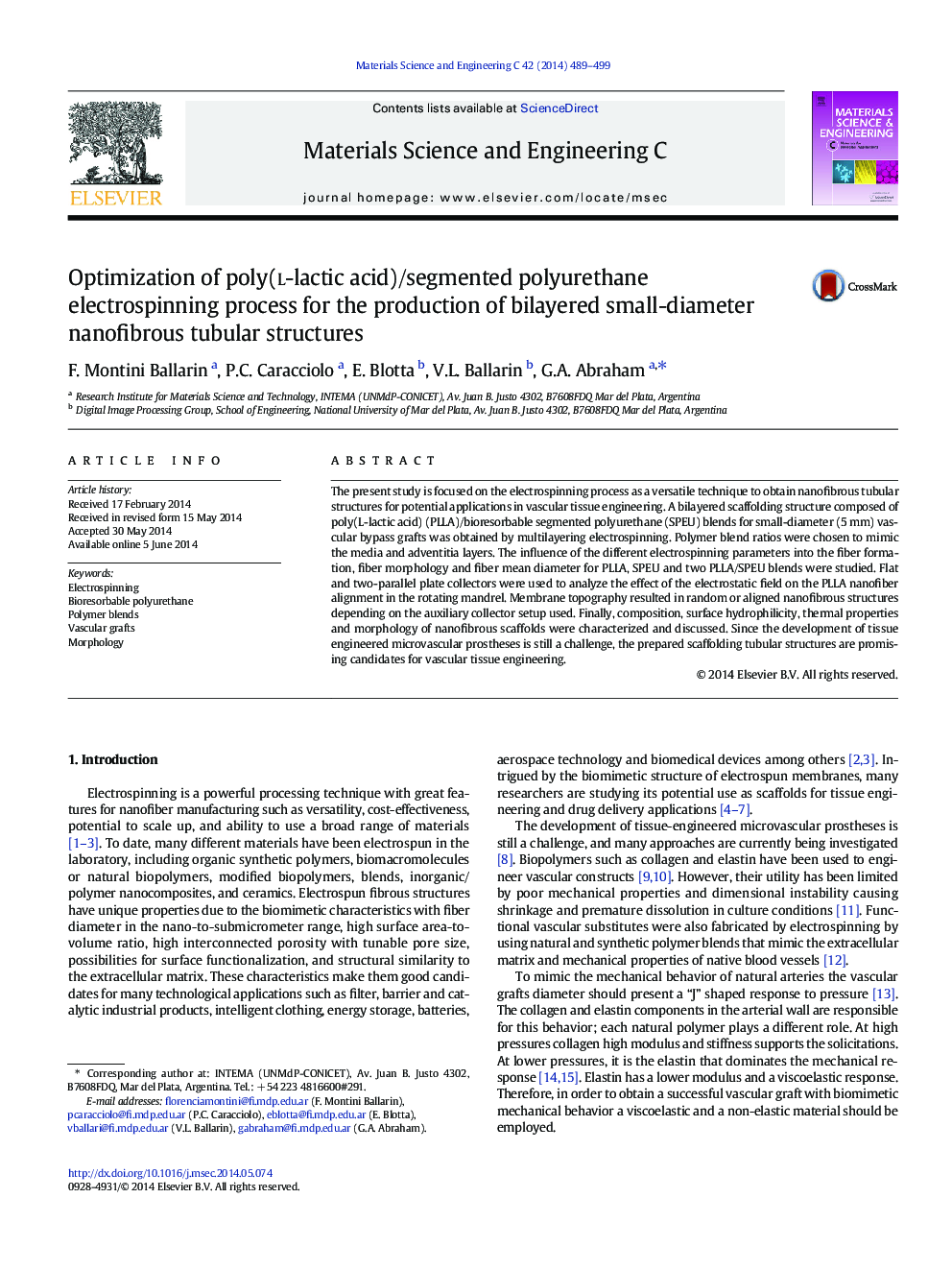| کد مقاله | کد نشریه | سال انتشار | مقاله انگلیسی | نسخه تمام متن |
|---|---|---|---|---|
| 1428662 | 1509179 | 2014 | 11 صفحه PDF | دانلود رایگان |

• Electrospinning conditions were optimized for PLLA, PU, and their blends.
• The collector setup used affected membrane topography: random or aligned.
• A bilayered vascular graft was produced by sequential electrospinning of blends.
• Electrospun blends exhibited better properties than raw polymers.
• These tubular structures are promising candidates for vascular tissue engineering.
The present study is focused on the electrospinning process as a versatile technique to obtain nanofibrous tubular structures for potential applications in vascular tissue engineering. A bilayered scaffolding structure composed of poly(L-lactic acid) (PLLA)/bioresorbable segmented polyurethane (SPEU) blends for small-diameter (5 mm) vascular bypass grafts was obtained by multilayering electrospinning. Polymer blend ratios were chosen to mimic the media and adventitia layers. The influence of the different electrospinning parameters into the fiber formation, fiber morphology and fiber mean diameter for PLLA, SPEU and two PLLA/SPEU blends were studied. Flat and two-parallel plate collectors were used to analyze the effect of the electrostatic field on the PLLA nanofiber alignment in the rotating mandrel. Membrane topography resulted in random or aligned nanofibrous structures depending on the auxiliary collector setup used. Finally, composition, surface hydrophilicity, thermal properties and morphology of nanofibrous scaffolds were characterized and discussed. Since the development of tissue engineered microvascular prostheses is still a challenge, the prepared scaffolding tubular structures are promising candidates for vascular tissue engineering.
Figure optionsDownload as PowerPoint slide
Journal: Materials Science and Engineering: C - Volume 42, 1 September 2014, Pages 489–499